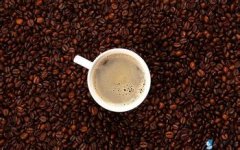The working principle and general knowledge of coffee usage of Belgian pot

There are many factors that affect a cup of coffee, how to control them and find the best way to cook them. The following is a list of several variables that can be used as a reference. If you are interested, you can try it yourself.
The relationship between the righting time and the temperature of the upper pot, the influence of the time of pouring powder on the extracted coffee juice, the way and times of stirring, the change of powder layer, flame size, thickness, bean character, judging stirring time and turning off time. Wait.
How the Belgian pot works:
The main principle of Syphon is to use the ideal gas equation: PV=nRT, under a fixed volume, heat the steam pressure of boiling water, press boiling water into the upper layer to brew coffee through a glass tube, and then cool the lower layer in a vacuum-like state to absorb the coffee already brewed in the upper layer, and filter the dregs through a filter in the middle. You can enjoy the coffee while watching the picking process, which is the charm of syphon. This method is suitable for single coffee and a small number of cups.
The usage of Belgian pot:
1. Pour hot water into the lower seat, the upper seat can be inserted obliquely into the lower seat, and then heated. This can avoid the occurrence of scalding when the water is too hot in the lower seat and then inserted into the upper seat.
two。 The blister becomes bigger, that is, straighten the upper seat.
3. After the hot water is completely raised to the upper seat, you can pour in the coffee powder that has been cooked before.
4. Gently stir the powder layer.
5. Practice smelling incense, observe changes in the powder layer, or start timing, whichever method you use, but avoid stirring all the time.
6. It's time to get the concentration, smell, or setting you want, and turn off the fire. At the same time, wipe the lower seat quickly with a wet dishcloth (evenly and quickly, do not fix the dishcloth in one place, lest the lower seat burst), so that the coffee can quickly enter the lower seat.
7. Gently shake the upper seat to pull out the lower seat.
8. Pour into the coffee cup (warm the cup in advance) and prepare to taste.
Important Notice :
前街咖啡 FrontStreet Coffee has moved to new addredd:
FrontStreet Coffee Address: 315,Donghua East Road,GuangZhou
Tel:020 38364473
- Prev

A series of mocha pots for brewing coffee at home
Nowadays, more and more people like to drink coffee, and with the gradual popularity of coffee culture, many people begin to try to buy their own coffee beans and coffee utensils to brew coffee at home, which is both hands-on and an attitude towards life. However, at the beginning of learning to make coffee, we will always encounter this or that problem. In order to help readers who want to simply brew coffee at home, this page will be irregular from this issue.
- Next

Demonstration of the method of making mocha pot based on basic knowledge of coffee
Fill with water. Do not exceed the pressure relief valve. Some mocha pots have safety line signs to separate the upper and lower seats, first put the lower seat on the fire source to heat, and then you can start grinding and loading powder. Don't fill the powder when loading, just pat the powder flat and firm. If the powder is pressed, it is difficult for the water to pass through the coffee powder, or stay in the powder for too long, which can easily lead to excessive extraction. For
Related
- Beginners will see the "Coffee pull flower" guide!
- What is the difference between ice blog purified milk and ordinary milk coffee?
- Why is the Philippines the largest producer of crops in Liberia?
- For coffee extraction, should the fine powder be retained?
- How does extracted espresso fill pressed powder? How much strength does it take to press the powder?
- How to make jasmine cold extract coffee? Is the jasmine + latte good?
- Will this little toy really make the coffee taste better? How does Lily Drip affect coffee extraction?
- Will the action of slapping the filter cup also affect coffee extraction?
- What's the difference between powder-to-water ratio and powder-to-liquid ratio?
- What is the Ethiopian local species? What does it have to do with Heirloom native species?

